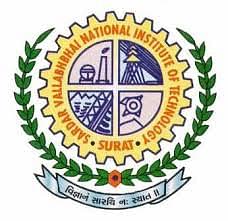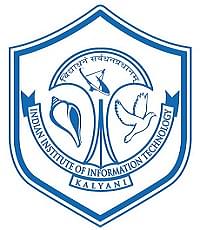Introduction about Ph.D. in Neuroscience
Ph.D. in Neuroscience is an advanced academic program dedicated to the comprehensive study of the nervous system, encompassing its structure, function, development, genetics, biochemistry, physiology, pharmacology, and pathology. This multidisciplinary field integrates principles from biology, psychology, chemistry, physics, and mathematics to unravel the complexities of neural processes.
What is admission process for Introduction about
Ph.D. in Neuroscience ?
The admission Ph.D. in Neuroscience typically involves several steps designed
to evaluate applicants' academic qualifications, research experience, and
potential for success in the program. While specific requirements may vary by
institution, the following outline provides a general overview of the admission
process:
1. Research Programs and Institutions
Research Programs: Identify universities and research
institutions offering Ph.D. programs in Neuroscience. Consider factors such as
faculty expertise, research facilities, and program reputation.
Faculty Contact: Reach out to faculty members whose
research aligns with your interests to discuss potential opportunities and
establish a connection.
2. Check Eligibility Requirements
Educational
Background: Typically,
applicants must have a bachelor's or master's degree in neuroscience, biology,
psychology, chemistry, or a related field. Some programs may accept applicants
with diverse academic backgrounds.
Minimum GPA: Maintain a strong academic record, usually
with a minimum GPA requirement (e.g., 3.0 on a 4.0 scale).
Prerequisite
Courses: Completion of
specific coursework in biology, chemistry, mathematics, and/or psychology may
be required.
3. Prepare Application Materials
Transcripts: Obtain official transcripts from all
post-secondary institutions attended.
Standardized Test
Scores: Some programs may
require GRE (Graduate Record Examination) scores. International applicants may
need to submit TOEFL or IELTS scores for English proficiency.
Letters of
Recommendation: Arrange for
letters of recommendation from professors or professionals who can attest to
your academic and research abilities.
Statement of
Purpose: Write a compelling
statement detailing your research interests, career goals, and reasons for
pursuing a Ph.D. in Neuroscience.
Curriculum Vitae
(CV): Include a detailed CV
outlining your academic achievements, research experience, publications,
presentations, and any relevant work experience.
4. Submit the Application
Complete
Application Form: Fill out
the online application form provided by the institution.
Application Fee: Pay the application fee, if required.
Submit Documents: Ensure all required documents, including
transcripts, test scores, letters of recommendation, and statement of purpose,
are submitted by the application deadline.
5. Interview Process
Initial Screening: Applications are reviewed by the
admissions committee. Shortlisted candidates may be invited for an interview.
Interview: Prepare for an interview with faculty
members or the admissions committee. Be ready to discuss your research
interests, academic background, and career goals.
6. Admission Decision
Notification: Successful candidates will receive an
offer of admission.
Acceptance: Review the offer details, including
funding packages, and accept the offer if you decide to enrol.
7. Enrolment
Complete Enrolment
Steps: Fulfil any
additional requirements such as submitting final transcripts, attending
orientation sessions, and registering for courses.
What is eligibility criteria for Introduction about
Ph.D. in Neuroscience?
The eligibility Ph.D. in Neuroscience can vary between
institutions, but generally include the following:
Educational
Background: Applicants
typically need to have a bachelor's or master's degree in neuroscience,
biology, psychology, chemistry, biochemistry, pharmacology, physics,
mathematics, or a related field. Some programs may accept students with degrees
in other disciplines if they have relevant coursework or research experience.
Minimum GPA: Most programs require a minimum grade
point average (GPA) for undergraduate and/or graduate coursework. This GPA
threshold varies by institution but is often around 3.0 on a 4.0 scale.
Prerequisite
Courses: Applicants may be
required to have completed specific undergraduate courses in biology,
chemistry, mathematics, physics, and psychology. These prerequisite courses
ensure that students have a foundational understanding of key concepts relevant
to neuroscience.
Research Experience: Strong research experience is highly
valued in Ph.D. programs. Applicants with prior research experience, either
through undergraduate research projects, internships, or employment in research
laboratories, are often preferred.
Letters of
Recommendation: Applicants
are typically required to submit letters of recommendation from professors,
researchers, or professionals who can speak to their academic abilities,
research experience, and potential for success in a Ph.D. program.
Statement of
Purpose: Most programs
require applicants to submit a statement of purpose outlining their research
interests, career goals, and reasons for pursuing a Ph.D. in Neuroscience. This
document provides an opportunity for applicants to demonstrate their passion
for the field and their alignment with the program's objectives.
Standardized Test
Scores: While not always
required, some programs may request scores from standardized tests such as the
GRE (Graduate Record Examination) or subject-specific GRE in Biology or
Psychology. International applicants may need to submit scores for English
proficiency exams such as the TOEFL or IELTS.
Interview: In some cases, shortlisted candidates may
be invited for an interview as part of the admissions process. The interview
allows the admissions committee to assess the candidate's suitability for the
program and their research interests.
It's essential for
prospective students to carefully review the specific eligibility criteria of
each Ph.D. program in Neuroscience they are interested in and ensure that they
meet all requirements before applying. Additionally, demonstrating a strong academic
record, relevant research experience, and a genuine passion for neuroscience
can significantly strengthen an applicant's candidacy at best university in India.
What is syllabus of Ph.D. in Neuroscience ?
The syllabus Ph.D. in Neuroscience program is highly specialized and typically includes a
combination of core neuroscience courses, elective courses, research training,
and professional development activities. While specific courses and requirements
may vary by institution, the following is a general overview of the typical
syllabus structure:
Core Neuroscience Courses:
Neuroanatomy:
Study of the
structure and organization of the nervous system, including the brain, spinal
cord, and peripheral nerves.
Neurophysiology:
Examination of the
electrical and chemical signaling processes within neurons and neuronal
networks.
Neurochemistry:
Understanding the
biochemical processes that regulate neural function, neurotransmitter systems,
and synaptic transmission.
Neurobiology of
Disease:
Exploration of the
cellular and molecular mechanisms underlying neurological and psychiatric
disorders.
Cognitive
Neuroscience:
Investigation of
the neural basis of cognitive functions such as memory, attention, perception,
and decision-making.
Systems
Neuroscience:
Analysis of neural
circuits and systems involved in sensory processing, motor control, and higher
cognitive functions.
Elective Courses:
Molecular
Neuroscience:
In-depth study of
molecular mechanisms underlying neuronal development, plasticity, and
degeneration.
Behavioral
Neuroscience:
Examination of the
neural basis of behavior, including studies on learning, motivation, emotion,
and social behavior.
Computational
Neuroscience:
Application of
mathematical and computational models to study neural systems and processes.
Developmental
Neuroscience:
Investigation of
the molecular and cellular mechanisms governing neural development and
neurogenesis.
Neuroimaging
Techniques:
Training in
neuroimaging methods such as MRI, fMRI, PET, and EEG for studying brain
structure and function.
Research Training:
Laboratory
Techniques:
Hands-on training
in experimental techniques such as electrophysiology, optogenetics, molecular
biology, and neurochemistry.
Data Analysis:
Proficiency in
analyzing neuroscientific data using statistical methods, programming languages
(e.g., MATLAB, Python), and data visualization tools.
Independent
Research:
Conducting original
research under the supervision of a faculty advisor, leading to the development
of a doctoral dissertation.
Professional Development:
Scientific Writing
and Communication:
Training in writing
scientific papers, grant proposals, and conference abstracts, as well as oral
presentation skills.
Ethics in
Neuroscience Research:
Discussions on
responsible conduct of research, ethical considerations in neuroscience, and
animal welfare.
Career Development:
Workshops and
seminars on career paths in academia, industry, government, and science
communication.
Dissertation Research:
Original Research
Project:
Completion of a
doctoral dissertation based on independent research, which contributes new
knowledge to the field of neuroscience.
Dissertation
Defense:
Oral defense of the dissertation before a committee of faculty members, demonstrating mastery of the research topic and findings.
These were staeps for admiussion and various process at top 5 universities in India.












